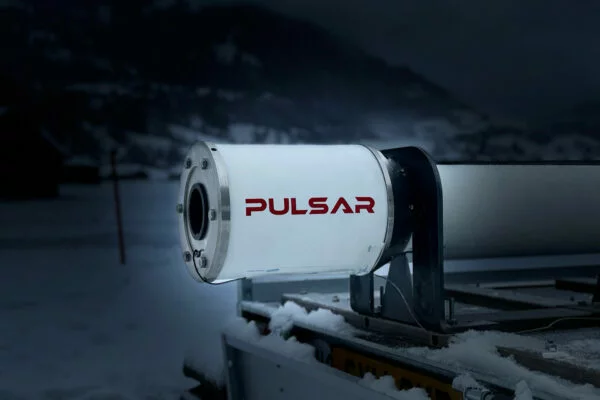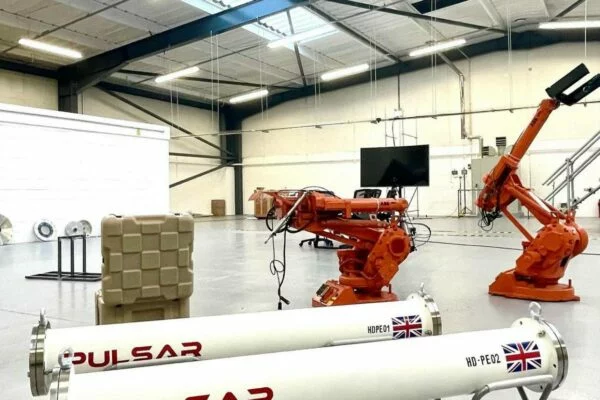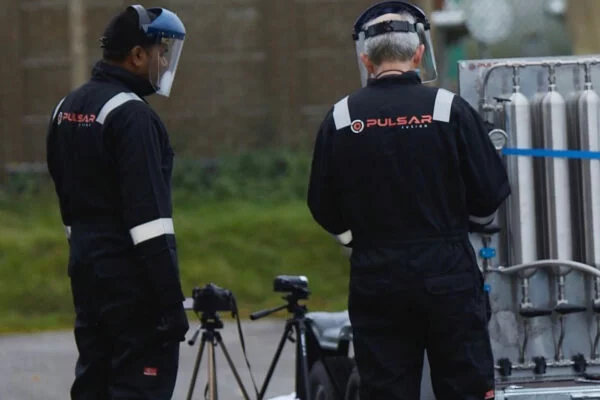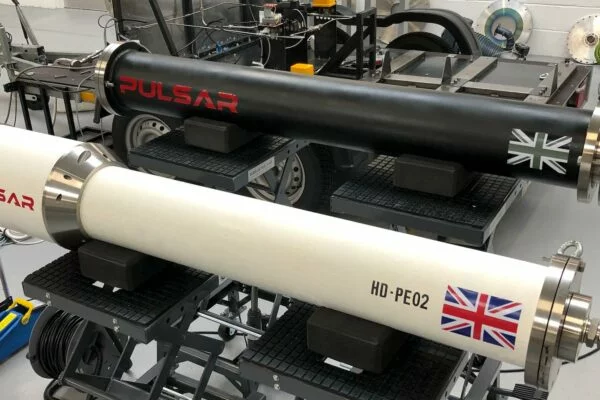STAGE 2 – LOW EARTH ORBIT (LEO) – OPERATIONAL
HYBRID HDPE ENGINE
Application
Hybrid rocket propulsion is used in several specific areas of space transportation. Those applications are micro-satellites (manoeuvring and orbit transfer), lunar and planetary landers, suborbital and orbital tourism vehicles.
The most positive qualities of a hybrid propulsion are simplicity, safety, stop and restart ability, throttling ability. Hybrid propellants are mostly storable and non-toxic. What is more, fuel and oxidiser are separated and stored in different phases, which positively effects on the safety level.
Product Description
Hybrid rockets avoid some of the disadvantages of solid rockets like the dangers of propellant handling, while also avoiding some disadvantages of liquid rockets like their mechanical complexity.
A hybrid rocket engine can use a range of plastic solid fuels. Pulsar Fusion uses High Density Polyethylene (HDPE) which can be sourced from recycled plastic waste. The Oxidiser is nitrous oxide – a common anaesthetic gas used in the medical industry. This offers lower toxicity and improved handling safety compared to many common rocket oxidisers.
The Pulsar Fusion Hybrid rocket engine is operated by a liquid oxidant fed from either self-pressurised or over-pressurised inventory tanks, through a system of tubing and actuators, into a combustion chamber lined with solid propellant, then ignited with a high temperature pilot flame. The firing is remotely managed via a manually operated data acquisition and control system.
Testing
Pulsar has tested its Hybrid Thruster System on three occasions since its rapid development program at the end of 2021. The first of these was a low-pressure system shakedown test at the MOD COTEC facility in the UK where the team’s ability to manage operations safely during a test campaign were proven alongside the system’s ability to function safely.
This was followed by a high-pressure test at Gstaad airport in Switzerland where the system was successfully tested at full thrust and under adverse environmental conditions.
A third test campaign was conducted at an independent test facility at RAF Westcott UK to validate performance using high fidelity sensor systems. The thruster system completed all testing with no failures or damage.
ENGINE DETAILS
N2O/HDPE
6kN – 12kN
180s
35bar
4.61kg/s
135mm length x 120mm width
1780 m/s
13
STAGE 2 – LOW EARTH ORBIT (LEO) – IN DEVELOPMENT
LIQUID HYDROGEN (LH2) ENGINE
Application
Liquid hydrogen is the highest performance chemical propulsion fuel, stemming from its low molecular mass and high heat of combustion. This allows hydrogen rocket engines to deliver the most payload when used for launch and in-space transportation.
Major spacefaring nations of the world have occasionally used LH2 in their vehicles, however its perceived costs and complexity have limited its usage to upper stages of launch vehicles. There is now a growing demand for clean, powerful propulsion systems post deployment.
Applications include Stage 2 propulsion, Upper stage for small launchers currently using non cryogenic propellants In Space transportation, Lunar Gateway resupply / Asteroid Mining.
The growth in satellite launch service demand is stimulating propulsion developers to rapidly introduce new launchers. Seven new vehicles were reported in 2019, the highest in a single year since 1999.
Product Description
The Pulsar liquid hydrogen rocket engine and liquid oxygen propellants differentiates itself from many other liquid rocket engine developments through higher performance and its ability to support global growth in the space industry while also having credentials to demonstrate it is carbon neutral. Hydrogen, while more challenging to handle than other cryogenic propellants such as methane or liquid oxygen, offers many specific benefits for Pulsar’s vision.
Hydrogen engines offer sales potential to small and larger launch service providers alike: customers for upper stage hydrogen engines currently exist in the UK, Pulsar is aiming to manufacture and supply six engines per annum to clients in our first year.
Hydrogen rocket engines are likely to generate value for future in-space transportation missions for example to the Moon and Mars, and will provide essential experience in handling liquid hydrogen, the most promising propellant for Pulsar’s fusion drive roadmap.
Furthermore, very few organisations exist in the UK with hands-on experience of liquid hydrogen. The aviation industry is set to begin decarbonising over the next decade, and liquid hydrogen powered aircraft development will be a significant part of that.
Liquid Hydrogen / Liquid Oxygen
15kN
4225ms-1 / 430s
2 MPa / 20 Bar
300mm length x 160mm width
850mm length x 660mm width
80
4.83
Timelines
Pulsar is currently manufacturing the first range of LH2 engines at its Bletchley facility and has secured a test site in Q2 2023 for demonstration of its 15 kN static launcher in Scotland followed by a VTOL demonstration on Q4 at our existing text site in Switzerland.
Feed system design is complete and the first Pulsar LH2 rocket chambers will be available for demonstration in Q1 2023.











